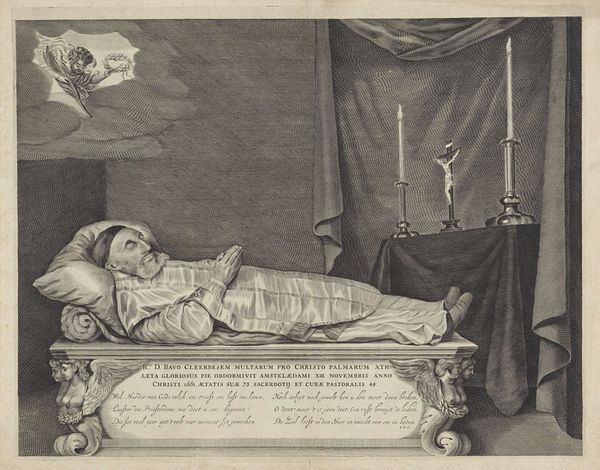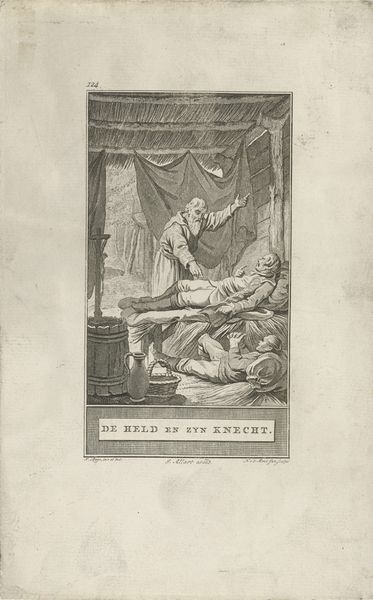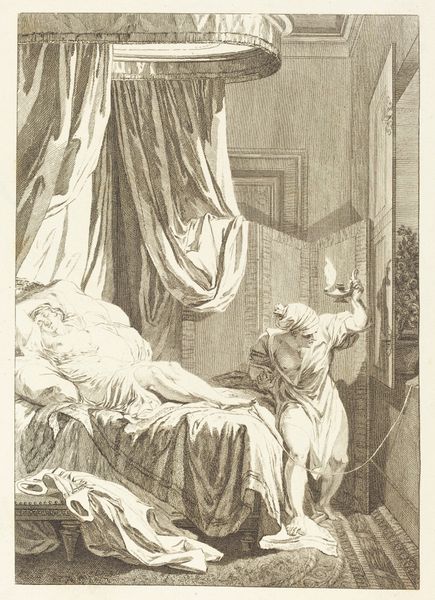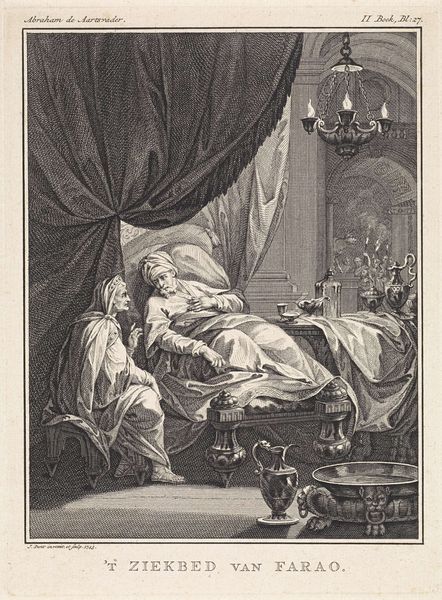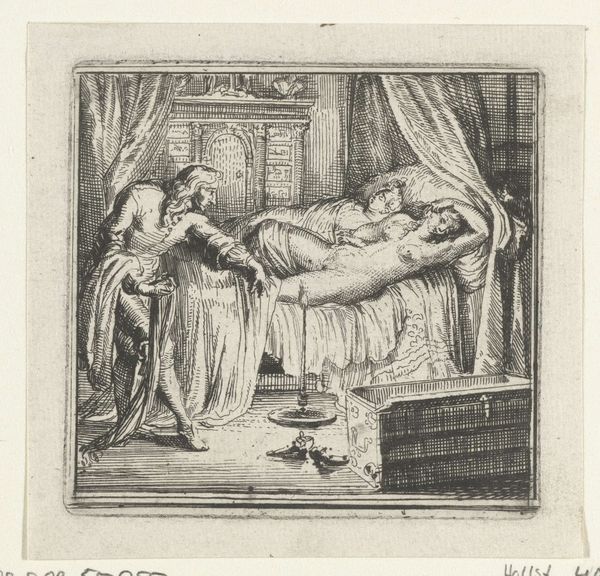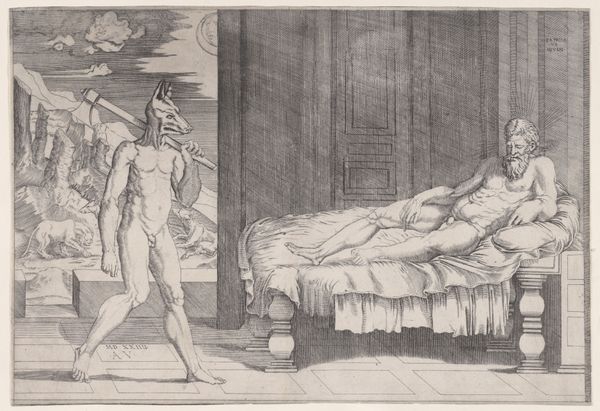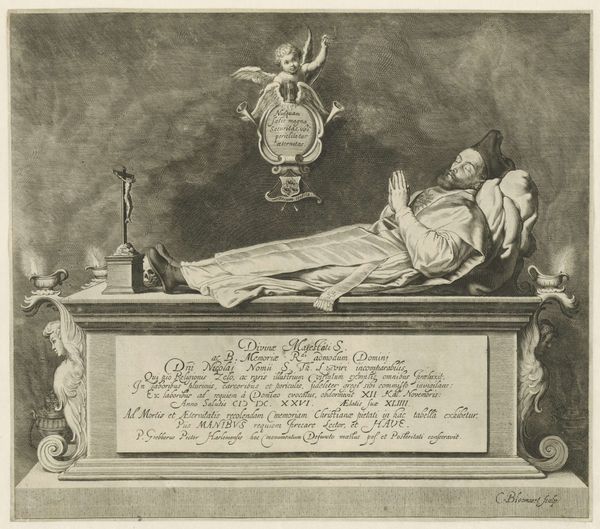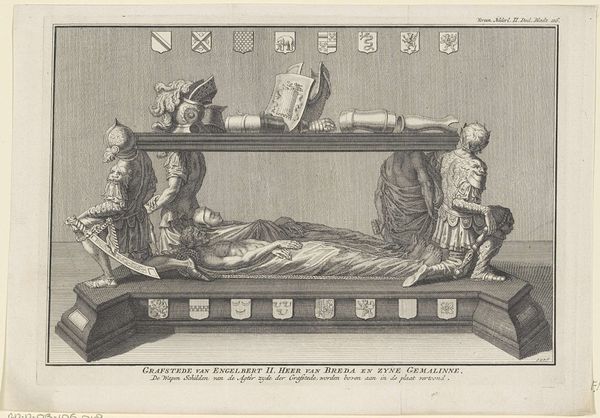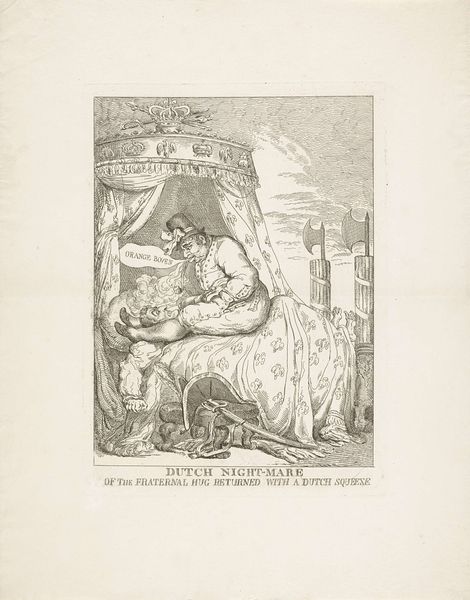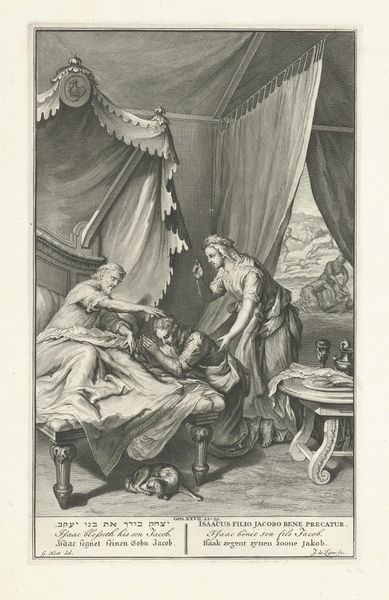
print, engraving
#
portrait
#
baroque
# print
#
death
#
old engraving style
#
engraving
Dimensions: height 413 mm, width 540 mm
Copyright: Rijks Museum: Open Domain
Curator: Here we have Theodor Matham's 1660 engraving, "Praalbed van Joannes Banning Wuytiers," currently held at the Rijksmuseum. What's your initial reaction? Editor: An overwhelming sense of solemnity. The stark black and white, the carefully arranged scene… it’s clearly meant to evoke a weighty, almost theatrical grief. Curator: It’s fascinating how the artist uses the medium of engraving here. Look at the fine, precise lines—they create such a controlled, detailed depiction of textures. The cloth, the wood grain, even the subtle shading of the skin, speaks volumes about the printing process and what that says about images in the baroque period, right? It's interesting that he made an print; who was this for, how did this medium affect dissemination? Editor: Absolutely, and within that meticulous detail lies a powerful symbolic language. Observe the candles, the crucifix. These aren't merely decorative; they're potent signifiers of faith, sacrifice, and the passage from earthly existence. Curator: Right. The placement of the objects is key. We have the corporeal reality of the body on this elaborate bier in juxtaposition to the celestial vision emerging at the top right with an angel's trumpet; together they are designed to highlight the transition of physical goods and wealth to divine promise, all through meticulous etching and carefully planned plate construction. Editor: And there is this focus on Joannes himself and that very personal feeling evoked through such specific choices: the inscription, the prayer hands… The intention isn’t just about a generic representation of death but also a very intimate remembrance of a specific man and his spiritual beliefs. He isn’t shown in anguish but in serene acceptance of his fate and destiny, very clearly meant to reflect the influence of his belief system at the time. Curator: It almost feels like a carefully orchestrated performance, presented to a specific set of contemporaries, highlighting not only their own values but how they choose to manifest it in print for mass distribution. Editor: I agree. There is almost a curated element that attempts to display something simultaneously human and symbolic to its contemporaries. A permanent declaration of life and of loss. Curator: So, we go from observing craftsmanship to unraveling a carefully crafted story of loss. Interesting how this all ties together. Editor: Precisely; a union of form and layered meaning that speaks across centuries.
Comments
No comments
Be the first to comment and join the conversation on the ultimate creative platform.
